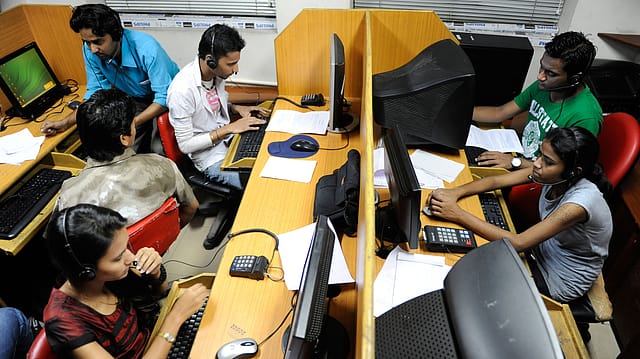India needs to create 8.3 lakh jobs a month up to 2030
ADVERTISEMENT

While the government is pushing forth its ambitious ‘Make in India’ program to create job opportunities, there is not much clarity on what the government can achieve.
How many jobs does the Indian economy need?, asks a recent report from Mumbai-based brokerage house Motilal Oswal Securities. Nikhil Gupta and Rahul Agrawal, research analysts at Motilal Oswal Securities, believe that India needs to create 10 million jobs per annum – or 0.83 million jobs per month – up to 2030.
If that number isn’t daunting enough, the duo’s other findings are even more unwelcoming. Their calculations suggest that there are about 29 million underutilised workers in India, another 4 million discouraged women currently out of the labor force due to non-availability of work, and 3 million workers looking to shift to a regular wage-paying / salaried job. “Together, these imply underemployment of about 36 million or nearly 4% of the population aged above 15 years,” the duo says.
Although, the question — how many jobs does India need? — appears simple, the answer is not. Gupta and Agrawal point at multiple estimates of annual jobs requirement over the next 15 years ranging from nearly 8 million to as high as 16 million. The government itself targets to create 100 million manufacturing jobs during the 7-year period ending 2022, implying annual jobs creation of about 14 million. But setting a target is one thing and achieving it is quite another. “A requirement of more than one million jobs per month has, thus, become a rule of thumb, which seems difficult to achieve,” the duo notes.
January 2026
Netflix, which has been in India for a decade, has successfully struck a balance between high-class premium content and pricing that attracts a range of customers. Find out how the U.S. streaming giant evolved in India, plus an exclusive interview with CEO Ted Sarandos. Also read about the Best Investments for 2026, and how rising growth and easing inflation will come in handy for finance minister Nirmala Sitharaman as she prepares Budget 2026.
Gupta and Agrawal explain that normally, job requirement in an economy is primarily determined by the annual increment to the labour force. “Not only has the incremental labour force been highly volatile in the Indian economy, it is also believed that the economy must eliminate the existing underemployment, and thus, the jobs requirement is higher,” the duo say. Estimating the proportion of such underutilization / underemployment, however, is a challenging task because simple calculations may easily lead to immense over-estimation of the problem, they warn.
Based on National Sample Survey Office surveys, Gupta and Agrawal highlight that nearly 70% of rural men are out of labor force because they are studying, almost four-fifth of the women, who are out of labor force, are involved in domestic duties. “Although the share of students - among females - has increased during the past two decades, domestic duties are still the dominant reason for rural females to stay out of the labor force,” the report points out. Interestingly, during the high-growth phase of FY2005 to FY2012, almost 57 million additional women in the rural area moved out of the labor force. “More than three-fourth of this increment was on account of domestic duties, which saw a jump of more than 43 million rural females.”
Among women aged 15 years & above, about 60% in rural areas and nearly 64% in urban areas were engaged in domestic duties in 2011-12, up from 52% and 63% in 2004-05, the report adds. Interestingly, about 92% women in both rural and urban areas spent most of their time on domestic duties. Needless to say that if women are required to spend most of their time on domestic duties, most of them are unlikely to accept employment even if it is available. “Not surprisingly then, only about 34% females in the rural area and 28% in urban area were willing to accept work, even if it is provided at their household premises,” Gupta and Agrawal point out. “What more, only about 20% of those females are ready to work full-time, while the majority will accept part-time work.”
One of the most perplexing features of the Indian labour market has been its low labour force participation ratio (LFPR). The LFPR has been falling, implying a higher and rising proportion of population ‘out of labor force’. Assuming that LFPR and unemployment rate remain unchanged at 53.7% and 3.5%, respectively, based on ILO estimates, the economy will be required to create 7.7 million jobs per annum up to 2030. However, if the country wants to eliminate almost all underemployment by 2030, and its LPFR and unemployment rate remain unchanged, the economy needs to create 10 million jobs per annum up to 2030. “Nevertheless, if LFPR continues its downward path as during the past decade, the number of jobs required will be lower,” Gupta and Agrawal say. Though little, it might be some respite for the Indian economy to accommodate its ever increasing labour force.
